|
Vickers Wellington Mk.IV
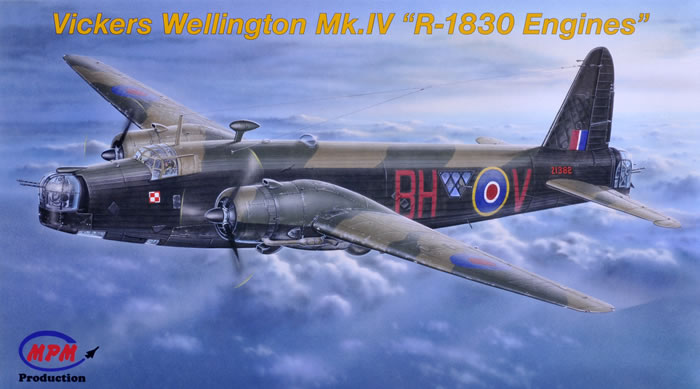
MPM, 1/72 scale
S u m m a r y : |
Catalogue Number: |
MPM 72555 Vickers Wellington Mk. IV “R-1830 Engines” |
Scale: |
1/72 |
Contents & Media |
See details below. |
Price: |
Available online from Hannants for £16.83, Squadron for US$38.70 |
Review Type: |
First Look |
Advantages: |
Beautifully detailed styrene parts. Well executed surface detail, Crisp clear transparencies, Good instruction sheet. Excellent decals. |
Disadvantages: |
Inserts for blanking off the fuselage windows will require careful fitting. |
Conclusions: |
With some care and patience the modeller will be rewarded with an excellent model of probably the least known of the Vickers Wellington types. |
Reviewed by Peter Mitchell

MPM's 1/72 scale Wellington Mk.IV is available online from Squadron.com
The Vickers Wellington formed the backbone of Bomber Commands efforts to take the war back to the Reich for the first half of the Second World War.
Able to haul a respectable bomb-load the geodetic form of construction gave the design immense strength despite the fact that the majority of the airframe was anachronistically covered in fabric. Many a Wellington bomber safely returned from a mission over occupied Europe having suffered damage that would have proved fatal to larger aircraft.
The Wellington was produced in large numbers with total production amounting to over 11,400 across the various marks (Compared to 7377 Lancasters, 6176 Halifax, 2380 Stirlings, 1430 Hampdens and 1737 Whitleys).
The Wellington Mk. IV was powered by two US Pratt and Whitney Twin Wasp fourteen cylinder R-1830 engines. It had the smallest production run of all the marks that saw squadron service, with no more than 220 being produced at the Chester factories. These equipped two Polish squadrons (300 and 301 Sqn) and one RAAF (460 Sqn) squadron.
This is the latest MPM version of the Vickers Wellington and the Mark IV now completes the set of Wellington marks that saw active squadron service. It joins the previous MPM productions of the Wellington Mk Ic, II, III and the Mk X issued in partnership with Italeri.
I quite like the MPM versions of the Wellington despite the limited run nature of the kit. To me this series is superior to its mainstream alternative, that produced by Trumpeter, primarily because of the surface detail. MPM has captured the effect of fabric over the geodetic framework very convincingly, even better than the Matchbox kit of thirty years ago, which was once the bench mark and still holds up quite well in this regard.
All the MPM Wellington kits are largely derived from a common set of sprues and consequently they all share the same major components for the airframe and internal details. The differences, just like on the full size original occur in the powerplants supplied, the intakes, exhaust systems, propellers and turrets used.
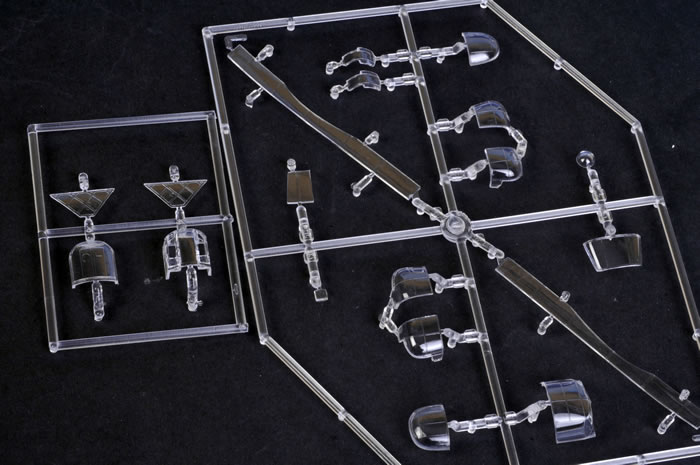
Since the previously mentioned MPM Wellingtons have, at some stage in the past all been reviewed on HyperScale, I would refer you to those reviews for an appraisal of the main kit parts, internal and surface details and the kits engineering. Suffice to say I rate these as being excellent and while they may not possess the extreme internal details of the Trumpeter kit and may require a bit more effort in construction to this alternative, the MPM series of Wellingtons are still very well detailed and possess everything needed to make a fine model of this magnificent aircraft. The transparencies are thin, clear and free from distortion and many parts intended for the other versions are included on the sprues contained in this kit. The spares box will get three sets of different propellers and two sets of engines among other useful detail parts.
The kit comes in a lightweight but sturdy top-opening box and the part sprues. Resin and decals are all individually bagged. This is just as well because the generous amount of parts bare fits into the box.
For this review I will concentrate on what’s new in the kit that enables the modeller to make a Wellington IV.
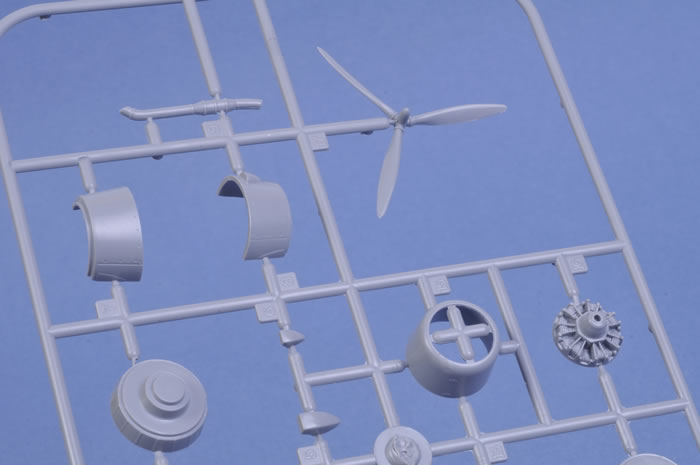
Basically this is achieved with a single extra sprue that contains new nacelle extensions, propellers, cowlings, two new intake scoops, cowling cooling gills and the P & W Twin Wasp engines. This last item is moulded as a single piece that slides into the back of the cowling, and while it is a double row radial engine represented on a single backing board the moulding is crisp and the detail sufficient to make a convincing representation of the original. The intake scoops will need their fronts hollowed out and there were sink marks on the tops of one set in my example.
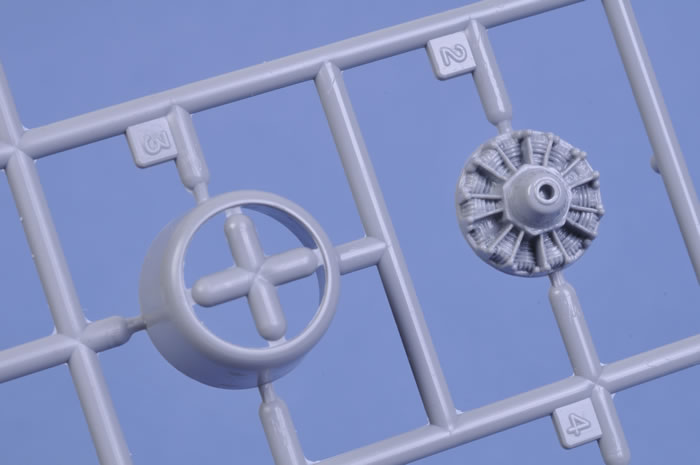
Nine resin parts complete the conversion. These are a made up of a new set of propeller spinners, gun mount for the rear turret and three beautifully moulded hedgehog exhausts (two pieces each).
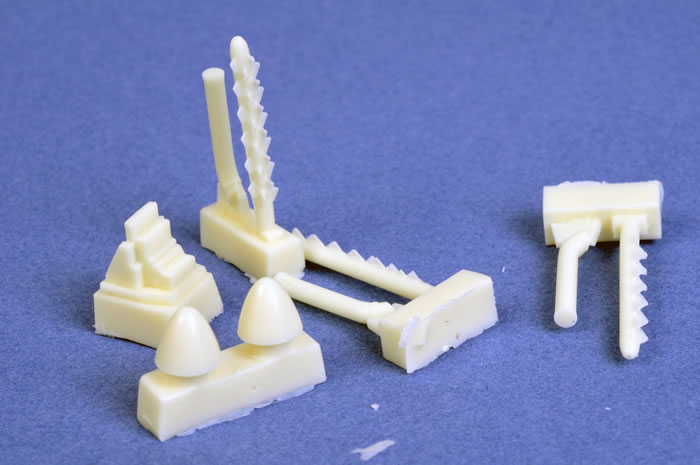
One part of the kit’s design that I do not favour so much is the need to fit inserts for blanking off the fuselage windows. MPM has used this method to squeeze the maximum options from the fuselage moulds. This area will require careful fitting and it is hard to see how the modeller will escape the use of filler on this section.
The decals are nicely printed and the detail on my example is fine. Colours were the correct tones and the register is perfect.
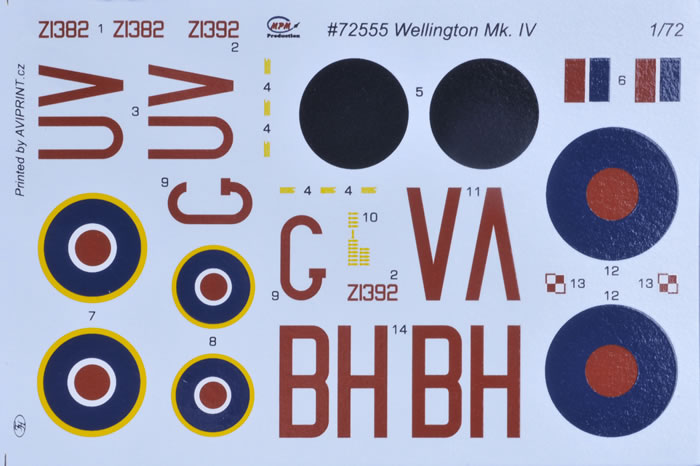
The modeller is provided with the choice of two options. Both sport the same dark green, dark earth over black livery typical of RAF Bomber Command.
- Wellington IV, Z1382/BH-V of 300 “Masovian” (Polish) Sqn RAF. 1942.
This features large dark red codes and the Polish “Chessboard” on the nose.
- Wellington IV, Z1392/UV-G of 460 (RAAF) Sqn RAF. Spring 1942.
This features a black patch where the fuselage roundel has been converted from the type A to the smaller type C. The nose features a “bomb-log”
With some care and patience the modeller will be rewarded with an excellent model of probably the least known of the Vickers Wellington types.
Highly recommended
Thanks to MPM/Special Hobby for the review sample.
Review Text Copyright © 2009 by Peter Mitchell
Images Copyright © 2009 by Brett Green
Page Created 23 July, 2009
Last updated
23 July, 2009
Back to HyperScale Main Page
Back to Reviews Page |
Home
| What's New |
Features |
Gallery |
Reviews |
Reference |
Forum |
Search